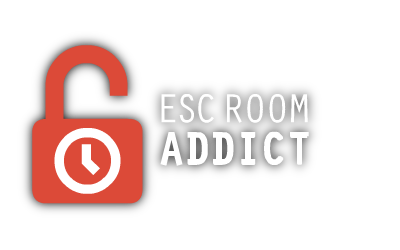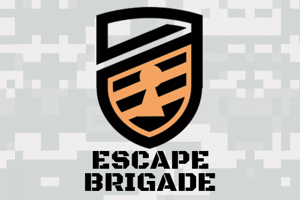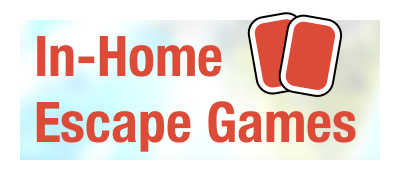The Cypher Files
The Cypher Files
- Played December 2020
- Variable
- 1-2 players
- $20 USD
- What People Say
From the creator of the Journal 29 series, comes Dimitris Chassapakis’ next escape book thriller: The Cypher Files! In this adventure you become part of an elite squad of mystery solvers who operate on the sub-government level trying to solve a curious anomaly, while at the same time, not involving too many political and legal authorities. This book has been a while in the making and therefore came with a lot of high expectations… did it live up to the hype? Let’s do some investigating of our own and see.
In typical puzzle book form, you get what you see. Each copy of The Cypher Files contains puzzles, artwork, clues, and of course QR codes to access the online interface you need to input your answers and receive any additional information throughout the game. Nothing fancy, nothing over the top, but some neat little touches that we want to point out. To start with, the design of the book is quite cool. The book is made to look (and somewhat feel) like a bunch of (cypher) files inside an investigation folder. A nicely embossed emblem is on the front, and the artwork within is well done. This plays into the immersive aspects of the game but we’ll talk about that later. Overall, there wasn’t anything over the top, but it contained everything we expected with a few nice touches included.
As we reflected on the immersive aspects of this escape book, we started to appreciate the journey it took us on. As already mentioned, it started with some high-quality design and artwork. As we made our way through the book it felt like we were looking at investigation files and snippets of information tossed together into a dossier for us to examine step by step. Although we enjoyed the Journal 29 series, The Cypher Files is a step ahead of its predecessors. It was more engaging and interactive, largely in part because of the story. It’s always nice to play a game where the story is developed WITHIN the game itself and not told completely in advance (what’s the fun in playing out a mystery if you already know what’s going to happen?) It may seem like a small trivial matter, but it’s also fun to note that the game always keeps you in the first-person narrative. Not only did this help keep us engaged, but it adds that fun level of tension in wanting to solve the mystery. If there was one critique our team had, it was the absence of any sound effects and/or music. A simple music file, or series of different sound effects to set the mood would’ve been great.
Puzzles are often tricky to evaluate. Unless there’s some major flaw in the presentation or consistent leaps in logic, we’re really just talking about variations in difficulty, types, and personal preferences. In this case, count us among those who really enjoyed these puzzles! Using the Journal 29 series as a comparison once again, The Cypher Files offers more variety in style and difficulty. Just like Journal 29 however, The Cypher Files are ideally suited for two players (or solo play), there are no team building puzzles, there’s minimal amounts of hints offered, and the online forum is your best bet for additional information or hints should you need it. So why did we like these puzzles so much if it had so many similarities to Journal 29? It’s the integration of puzzles into the theme, story, and common-sense approach they are designed with. The puzzles are ‘fun’ because they make sense. It’s funny how accustomed most escape room enthusiasts have become with out of context puzzles (e.g. why in the world would anyone put a lock on their shoebox at home? Or hide the combo to their safe on the wall written in backwards letters? Or put a sudoku on their fridge to open it? …etc, etc, etc). In the Cypher Files there’s none of that! Do you need to break into someone’s computer (a natural place to put a password lock?) …no need to solve it with a crossword puzzle, because maybe the person’s password is found the same way EVERYONE else’s is (a memorable birthday, telephone number, name, or anniversary!) When puzzles make sense, they’re more fun, immersive, and in our opinion, better designed. One final note to add, there’s a total of 28 puzzles in the book which is about 30% less than the Journal 29 series…but we’re here to say this is a good example of “less is more”.
Overall did we have fun with this game book? Yes we did! Would we recommend this game to you? Yes we would, but remember, it isn’t the exact same as an escape room. We say this because if you’re new to the world of puzzle escape books, we want to make sure you temper your expectations and realize it often takes longer to get through these type of books than it does a standard escape room. Be patient, let your mind brainstorm on the puzzles for a longer length in time, and take the occasional coffee break… follow this advice and you’re bound to enjoy it as much as we did. Kudos to Dimitris Chassapakis. We look forward to his continued growth as an in-home, escape game designer, and can’t wait to see what’s coming our way next!
We want to hear your thoughts on this game! Be sure to comment in the section below or send us a message via ERA’s email, Facebook, Instagram, YouTube, or Twitter… As always, happy escaping!
Final Verdict: | 7.8/10 |





